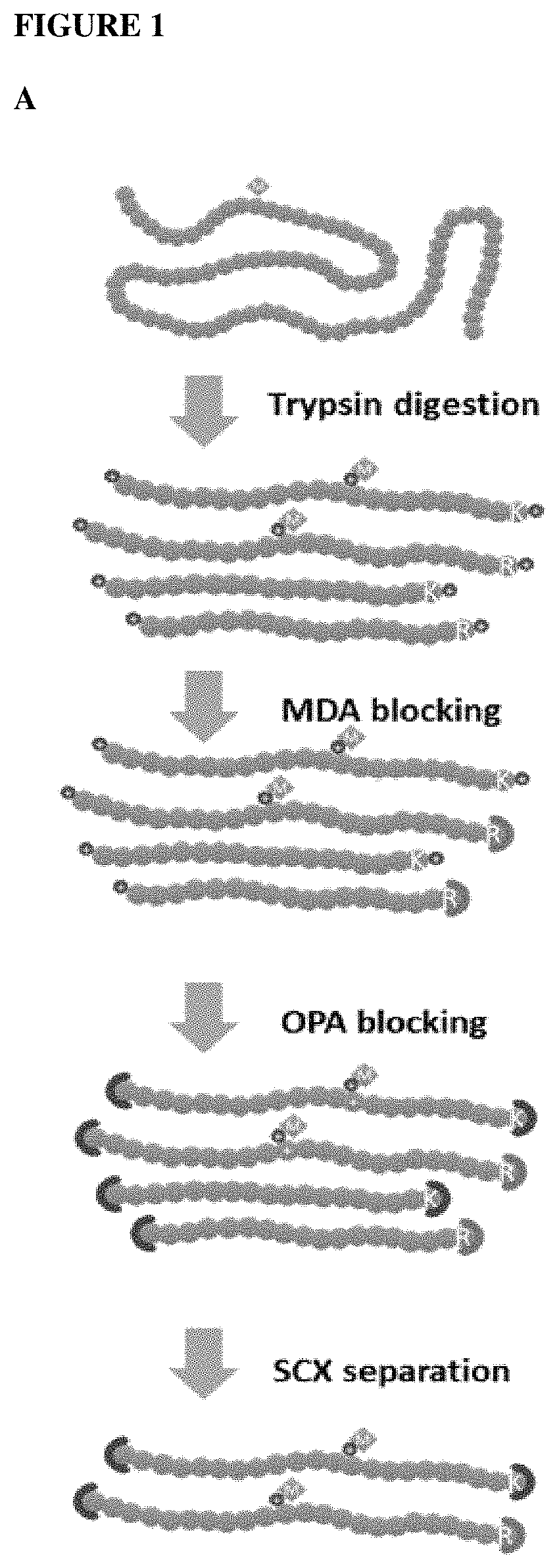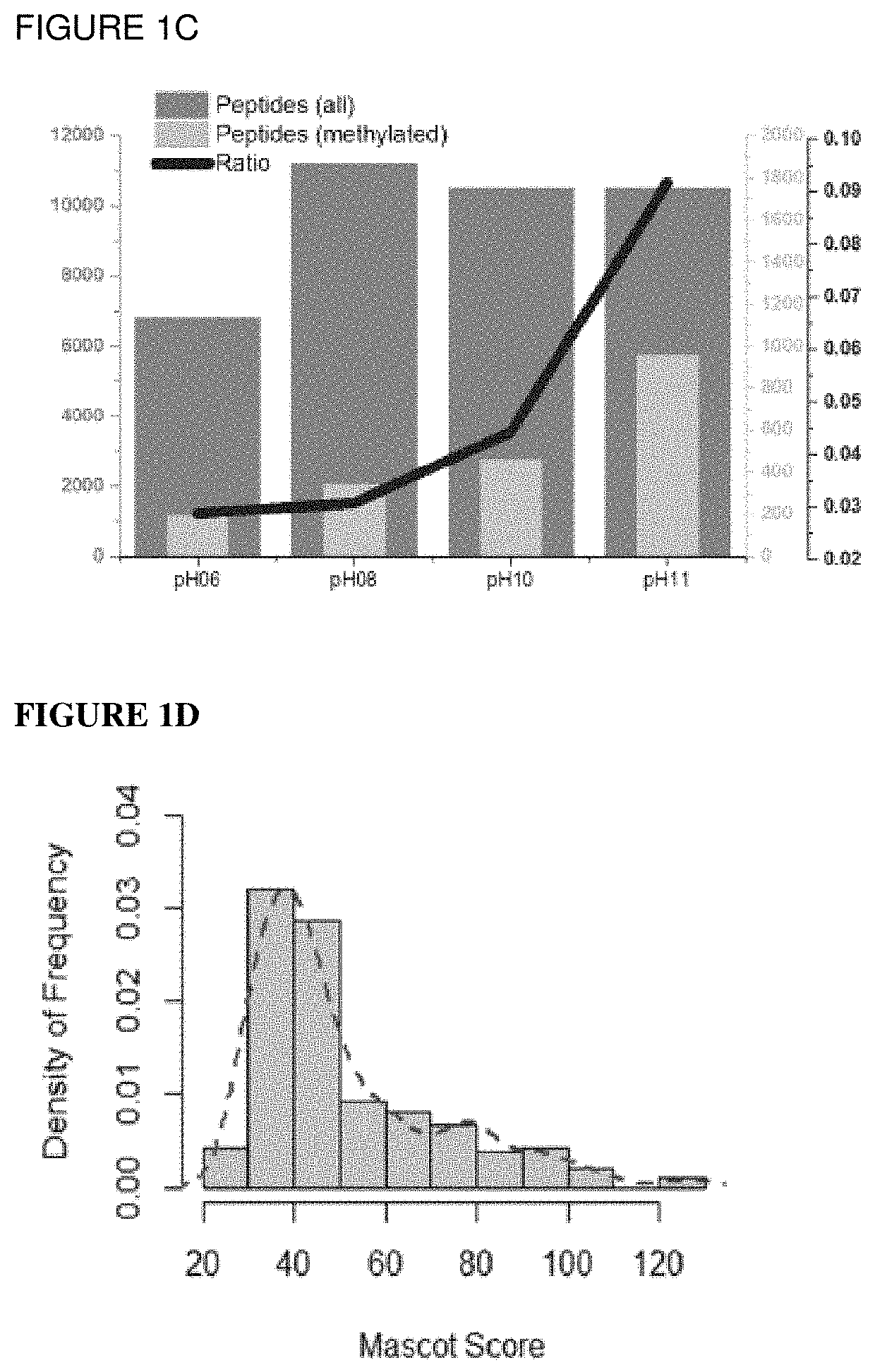Method for profiling protein methylation
a protein methylation and profiling technology, applied in the field of large-scale, high-throughput profiling of protein methylation, can solve the problems of limited mono-methylated lysine approach, limited antibody availability, and limited routine characterization of protein methylation by quality and availability of antibodies, and achieve cost-effective effects
- Summary
- Abstract
- Description
- Claims
- Application Information
AI Technical Summary
Benefits of technology
Problems solved by technology
Method used
Image
Examples
example 1
Selection Strategy for Neutralizing Un-Methylated Peptides
[0057]We developed a negative selection strategy by neutralizing un-methylated peptides allowing the enrichment of methylated peptides based on their remaining charges. A schematic diagram showing the workflow of the method is shown in FIG. 1A. Briefly, the proteome was first digested into peptides using trypsin. Then, two subsequent chemical reactions with malondialdehyde (MDA) and ortho-phthalaldehyde (OPA) were used to block the un-methylated arginine and lysine residues, as well as the free N-terminal amine of peptides, to eliminate their positive charges. These two reactions blocked most of the charge-carrying functional groups (N-terminal, lysine, and arginine residues) in digested peptides, leaving mainly methylated peptides carrying charges at neutral or basic pH (FIG. 3).
[0058]The methylated peptides were then readily enriched by strong ion exchange (e.g., strong cation exchanger, or SCX). Moreover, any background un...
example 2
of Methylated Protein in a Mixture
[0064]Following optimization, we tested whether these two chemical reactions could be combined in a workflow for the charge-based negative enrichment of methylated peptides based on the fact that the methylated arginine and lysine side chains do not react with MDA-OPA. Briefly, samples were first subjected to the MDA reaction followed by the OPA reaction. Prior to the OPA reaction, the MDA products were purified and reconstituted in the OPA buffer. The final products were then subjected to SCX fractionation by pH-step elution before MS analysis (FIG. 1).
[0065]We tested whether a standard methylated protein could be detected in a complex mixture using the optimized workflow described above. Briefly, intact bovine serum albumin (BSA) protein was chemically methylated using a dimethylation strategy previously described (Kleifeld, O. et al., Nat. Biotechnol. 28: 281-288 (2010)) to introduce mono- and dimethylation on lysine at the protein level. Mass sp...
PUM
| Property | Measurement | Unit |
|---|---|---|
| pH | aaaaa | aaaaa |
| mass shift | aaaaa | aaaaa |
| mass shift | aaaaa | aaaaa |
Abstract
Description
Claims
Application Information
 Login to View More
Login to View More - R&D
- Intellectual Property
- Life Sciences
- Materials
- Tech Scout
- Unparalleled Data Quality
- Higher Quality Content
- 60% Fewer Hallucinations
Browse by: Latest US Patents, China's latest patents, Technical Efficacy Thesaurus, Application Domain, Technology Topic, Popular Technical Reports.
© 2025 PatSnap. All rights reserved.Legal|Privacy policy|Modern Slavery Act Transparency Statement|Sitemap|About US| Contact US: help@patsnap.com



